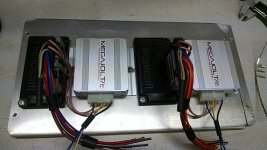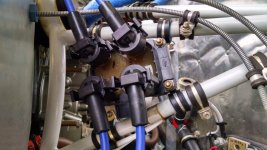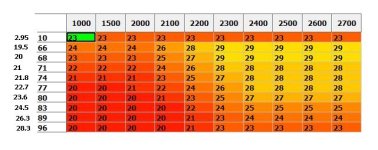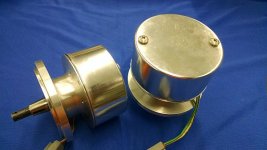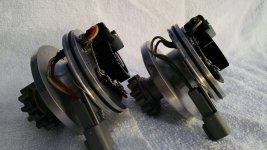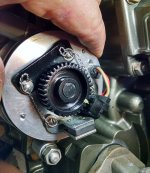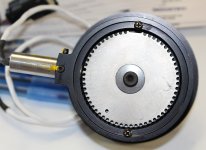I'm going faintly off topic here, but cold hard comparison has merit.
For the last 700 hours or so I've been flying a system based on a Ford EDIS module. It receives instructions from an external controller, and defaults to 10 BTDC if no instructions. There are many, many millions of them worldwide.
The controller gets its crankshaft position information from a simple magnetic reluctor, exactly like an Electroair. My reluctors are mounted in the mag holes. They can also be at the flywheel end.
The Ford module is a sealed brick. They're $100 or less used everywhere. Been a few years, but I bought new ones for $99 on eBay. The current Megajolt/e MkII controllers are about $200 each (Mk1 controllers in the photo below, since upgraded). They're mounted behind the firewall.
View attachment 54563
Coils are $30 to $100 depending on source. The p-mag uses a second generation Ford EDIS coil. I use a 1st gen because it includes positive plug wire retention.
View attachment 54564
The controller is temporarily connected to a laptop via USB for setup and entering advance maps. It holds two maps, switchable in flight with a simple toggle. I keep one map set for fixed 23 BTDC, and experiment with the other. Here's the current advancing schedule. I've not changed it in quite a while.
View attachment 54565
Data entry is just fill-in-the-blanks on the laptop, manifold pressure increments on the left (inches of mercury and kPa), RPM increments across the top, timing in the grid. The controller extrapolates between points. The 10 kPa line is set at 23 across all RPMs so a MAP sensor failure cannot cause a timing advance at any throttle position. Max advance is 29 BTDC, based on flight test. Remember, this a 390 angle valve. The angle valve does not respond to advance like a parallel valve.
How do I know? I can switch from 23 fixed to an experimental schedule, observe the results, and go right back to 23 at any time.
Cruising at peak EGT and 2400~2450, there is no practical difference between a typical 28~29 per the above, and fixed 23 timing. The advanced schedule is used to run significantly LOP, but I rarely do so. Yes, I know the arguments, but running 8 knots slower to save less than 3 gallons on a three hour tour just doesn't float my Minnow.
Power is direct connection to the main PC925 and a 3 AH backup. To be forced to the backup would require losing both the alternator
and connection to the PC925. Then I could only fly about two more hours. I have flown from the Knoxville area to 08A on main battery alone, with everything running, including the autopilot.
I originally assembled these systems for less than $400 each. It would cost more now, but not a lot more. They've been bulletproof. The only moving parts are the re-machined Bendix mag shafts in the reluctor assemblies. Forgive me, but I don't see much value in self-generation when it comes with engine mounted electronics, lousy connectors, blast tubes, and canned advance, at nearly $4000.
True story. A few years ago Bill Kervaski brought some friends down from Birmingham and we all flew over to Falcon. One of the friends was a nice kid with a new-to-him 390 powered RV-8, pro-built as I recall. P-mags, no jumpers, no clocking. We literally flew side by side, and he was burning twice the fuel (full rich for "cooling") with 50F higher CHTs. Even if you like p-mags, the settings were wrong as a soup sandwich. Don't be that kid.



